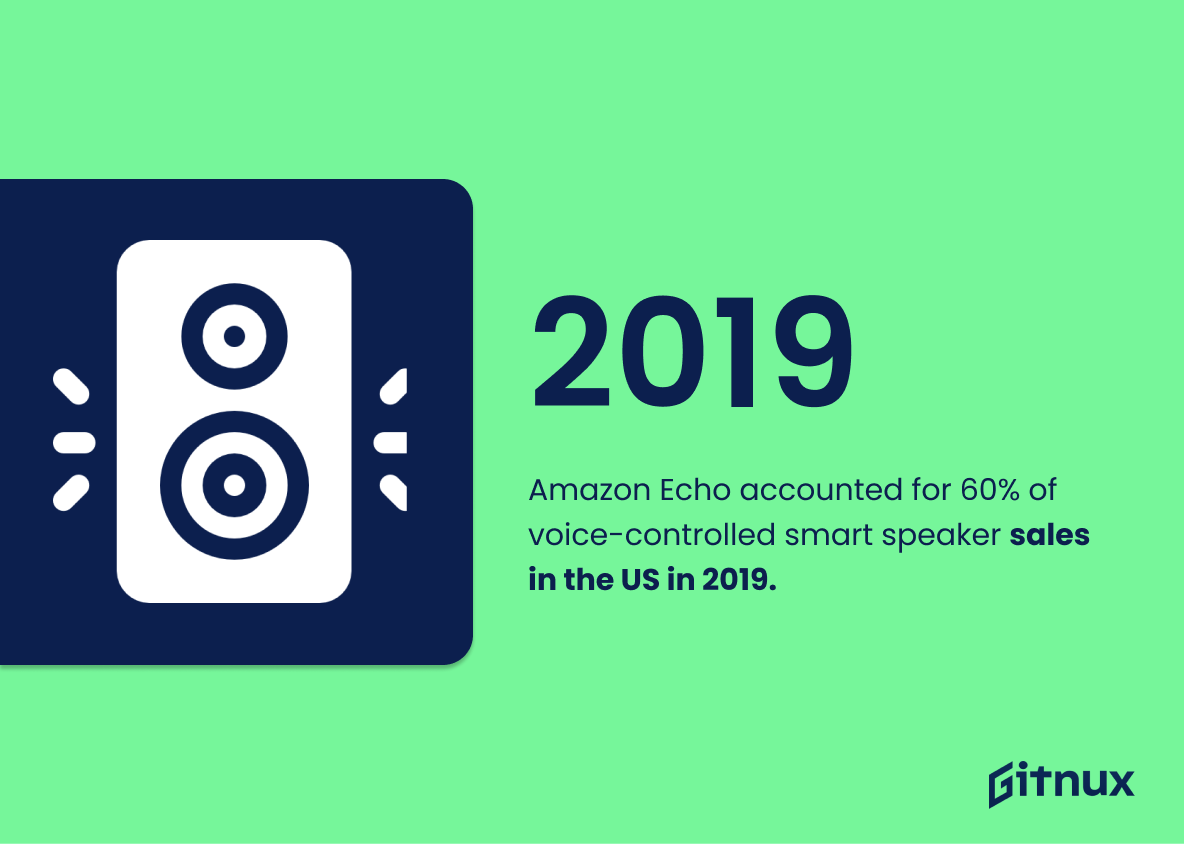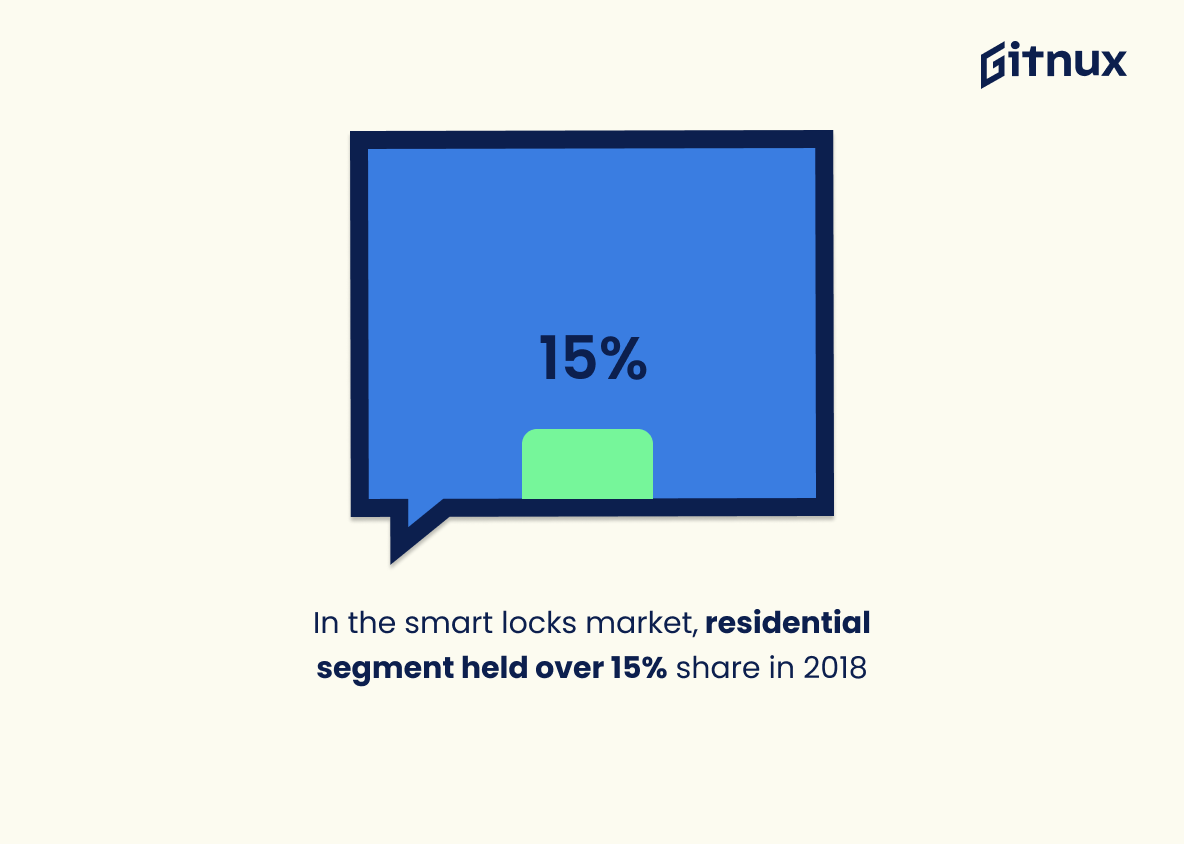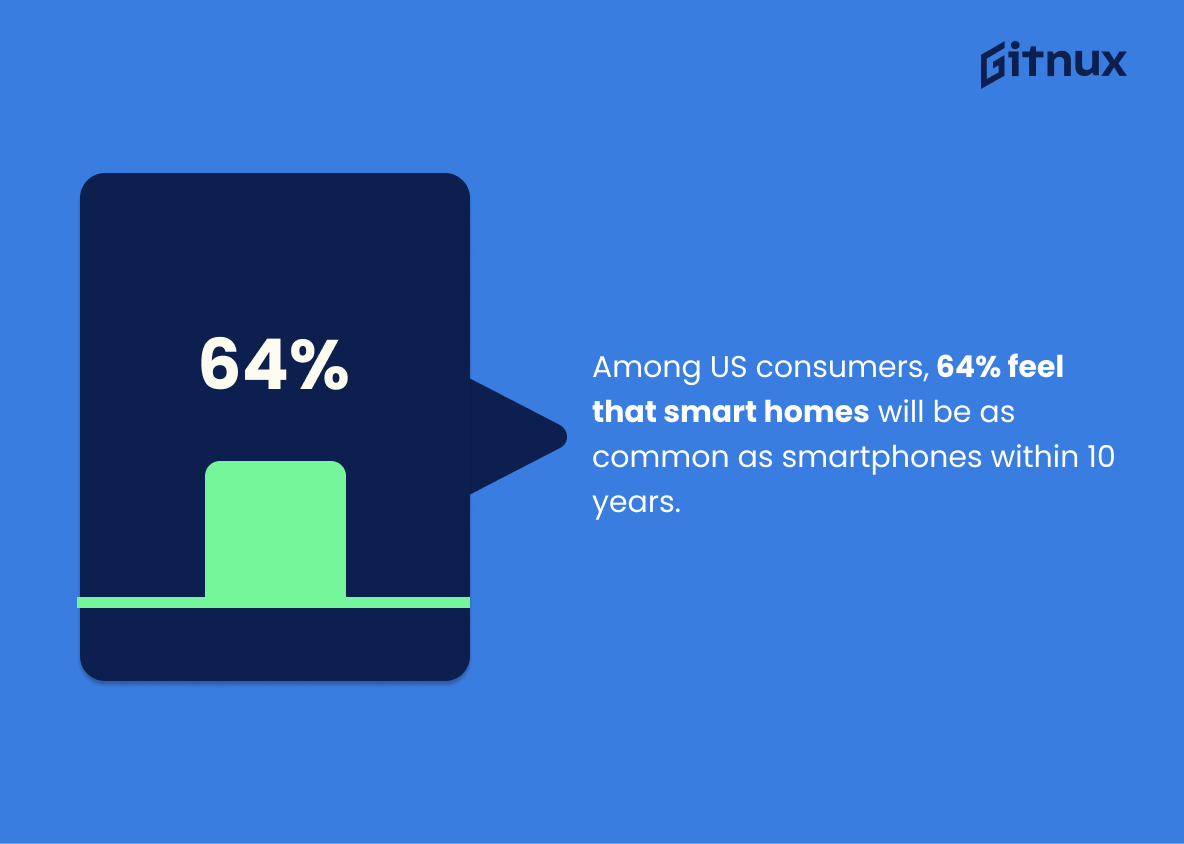The global smart home market is projected to be worth more than $163 billion by 2025, and it’s estimated that over 40% of US households will own a smart home device by 2023. Smart thermostats are expected to reach a value of over $7 billion in the next five years, while the global smart lighting market is predicted to grow at an impressive CAGR of around 20%. Additionally, 27.6% of US households already own a smart TV or streaming device.
Energy management and lighting systems constituted the major share for applications during 2018 with energy efficiency being one of the top priorities among consumers when considering purchasing these devices. The same year saw approximately 80% adoption rate for new homes in America as well as voice-controlled devices accounting for 68% market share within this sector alone. DIY home automation also had its place on the map with an estimated size valued at nearly 15 billion dollars last year; however, security still remains paramount – 2019 marked 2.14 billion dollar valuation globally just from this segment alone.
Millennials have been leading much of this growth trend due to their willingness to pay extra money for such technology but they’re not alone – 64 percent feel that 10 years down line we’ll see them become commonplace like smartphones today. This sentiment has only grown stronger since then which can be seen through 73 percent who now agree with it even more so than before despite 2020’s economic downturns across many industries worldwide..
This statistic is a testament to the immense potential of the home automation market. It shows that the industry is growing rapidly and is expected to reach a staggering $163 billion by 2025. This is a clear indication that home automation is becoming increasingly popular and is likely to become an integral part of our lives in the near future.
More than 40% of US households are expected to own a smart home device by 2023.
This statistic is a telling indication of the growing popularity of home automation technology. It shows that more and more households are embracing the convenience and efficiency of smart home devices, and that the trend is only expected to continue in the coming years. This is an important point to consider when discussing the current and future state of home automation.
Home Automation Statistics Overview
Approximately 45% of home automation users in the US are between the ages of 25-34.
This statistic is significant in understanding the demographic of home automation users in the US. It reveals that a large portion of the population using home automation technology is within the 25-34 age range, indicating that this age group is particularly interested in the convenience and efficiency that home automation offers. This information can be used to inform marketing strategies and product development, as well as to better understand the needs and preferences of this demographic.
The global smart lighting market is predicted to grow at an impressive CAGR of around 20% during 2020-2025.
This statistic is a shining beacon of hope for the home automation industry, indicating that the market for smart lighting is expected to experience a significant surge in growth over the next five years. This is great news for those looking to invest in home automation technology, as it suggests that the industry is likely to remain a lucrative one in the foreseeable future.
Around 27.6% of US households own a smart TV and smart streaming devices.
This statistic is indicative of the growing trend of smart home technology adoption in the US. It shows that a significant portion of households are already taking advantage of the convenience and efficiency of smart TVs and streaming devices, and are likely to be open to further exploring the possibilities of home automation.
By 2025, an average smart home in the US is forecast to have more than 35 connected devices.
This statistic is a telling indication of the growing prevalence of home automation in the US. By 2025, the average smart home is expected to be equipped with more than 35 connected devices, demonstrating the increasing popularity of home automation technology and its potential to revolutionize the way we live.
Energy management and smart lighting systems constituted the major share of smart home market applications during 2018.
This statistic is a telling indication of the direction the home automation market is heading in. It shows that energy management and smart lighting systems are the most popular applications of home automation, indicating that homeowners are increasingly looking for ways to save energy and money. This is an important trend to note, as it suggests that home automation is becoming more and more about practicality and efficiency, rather than just convenience.
In 2019, the global market for smart home security was valued at approximately $2.14 billion.
This statistic is a testament to the growing popularity of smart home security systems. It shows that more and more people are investing in home automation technology to protect their homes and families. This statistic is a clear indication that home automation is becoming an increasingly important part of our lives.
Around 37% of smart home customers in the US prioritize energy efficiency features.
This statistic is a telling indication of the importance of energy efficiency features in the minds of smart home customers in the US. It shows that a significant portion of customers prioritize energy efficiency when considering home automation products, suggesting that energy efficiency is a major factor in the decision-making process. This is an important insight for anyone looking to understand the current trends in home automation and the preferences of customers in the US.
In 2020, the size of the DIY home automation market was estimated to be around $14.9 billion.
This statistic is a testament to the immense growth of the DIY home automation market in 2020. It shows that the market has grown exponentially in the past year, indicating that home automation is becoming increasingly popular and accessible. This is an important point to consider when discussing the current state of home automation, as it demonstrates the potential for further growth in the future.
In 2018, approximately 80% of new US homes adopted smart home technology.
This statistic is a telling indication of the growing popularity of home automation technology. It shows that more and more people are recognizing the convenience and security that comes with having a smart home. This statistic is a great starting point for a blog post about home automation statistics, as it provides a snapshot of the current state of the industry.
Voice-controlled home automation devices account for about 68% of the market share in the US.
This statistic is a testament to the growing popularity of voice-controlled home automation devices in the US. It shows that more and more people are turning to these devices to make their lives easier and more efficient. This statistic is a great indicator of the potential of home automation technology and its potential to revolutionize the way we live.
Smart home penetration in the United States is around 32.3% in 2021.
This statistic is a crucial indicator of the current state of home automation in the United States. It reveals that a significant portion of households have already adopted smart home technology, demonstrating the growing popularity of home automation. This statistic is essential for understanding the current trends in the home automation industry and can be used to inform decisions about future investments in the sector.
Amazon Echo accounted for 60% of voice-controlled smart speaker sales in the US in 2019.
This statistic is a testament to Amazon Echo’s dominance in the voice-controlled smart speaker market in the US in 2019. It highlights the fact that Amazon Echo is the go-to choice for many consumers when it comes to home automation, and serves as a reminder of the importance of staying up-to-date with the latest trends in home automation technology.
In the global smart locks market, the residential segment accounted for the largest market share of more than 15% in 2018.
This statistic is a testament to the growing popularity of smart locks in residential settings. It shows that homeowners are increasingly turning to smart locks to provide an extra layer of security and convenience to their homes. This is an important trend to note, as it indicates that home automation is becoming more commonplace and accepted in the residential market.
The smart doorbell market in the US and Europe is set to reach a value of approximately $1.4 billion by 2023.
This statistic is a testament to the growing popularity of smart doorbells in the US and Europe, indicating that home automation is becoming increasingly commonplace. It shows that the market for smart doorbells is expected to experience significant growth in the coming years, making it an important factor to consider when discussing the current and future state of home automation.
Among US consumers, 64% feel that smart homes will be as common as smartphones within 10 years.
This statistic is a telling indication of the future of home automation. It suggests that the majority of US consumers believe that smart homes will become as ubiquitous as smartphones within the next decade. This statistic is important to consider when discussing the potential of home automation, as it shows that the public is optimistic about the technology’s future.
73% of millennials are willing to pay more for smart home technology in their homes.
This statistic is a telling indication of the growing popularity of smart home technology among millennials. It shows that the majority of this demographic is willing to invest in the convenience and efficiency that home automation can provide. This is an important statistic to consider when discussing the current state of home automation, as it demonstrates the potential for growth in the industry.
Conclusion
The statistics presented in this blog post demonstrate the growing popularity of home automation technology. By 2025, the global smart home market is projected to be worth more than $163 billion and it is estimated that over 40% of US households will own a smart device by 2023. Smart thermostats, lighting systems, TVs and streaming devices are all becoming increasingly popular among consumers who prioritize energy efficiency features such as voice control. The DIY home automation market was valued at around $14.9 billion in 2020 while 73% of millennials are willing to pay extra for these technologies in their homes. It appears that within 10 years, smart homes may become just as common as smartphones today – an exciting prospect indeed.
References
0. – https://www.accenture.com
1. – https://www.forbes.com
2. – https://www.realhomes.com
3. – https://www.marketwatch.com
4. – https://www.globenewswire.com
5. – https://www.parksassociates.com
6. – https://www.mordorintelligence.com
7. – https://www.cnet.com
8. – https://www.statista.com
9. – https://www.imarcgroup.com
10. – https://www.businesswire.com
11. – https://www.adweek.com















